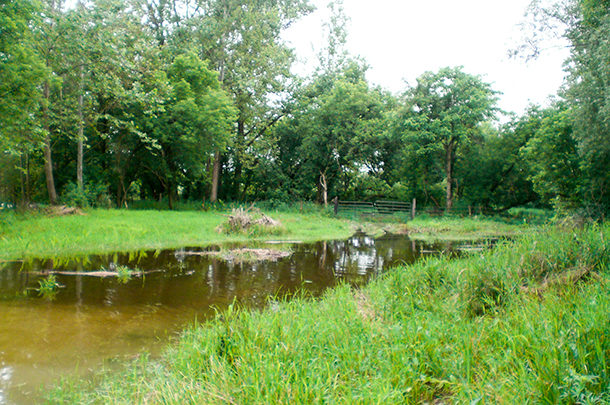Manure, as well as the prior grazing history and incidences of prolonged wet weather, could mean a proliferation of internal worms, gastric bacterial infections and insect vectored virus issues for your herd.
Here are just two pathogen issues to consider before moving livestock into alternative grazing environments.
Worms
Rotational grazing, while yielding biomass benefits, introduces a continuous stream of parasite larvae back into the soil. Forage contamination by infective larvae is the primary route of entry. With the increase in anthelmintic resistance (also known as wormers), it’s getting harder and harder to manage lungworms, stomach worms and all those intestinal worms, once they occur.
Some of the less obvious signs of internal worm infection in cattle (especially calves, yearlings and first-calf heifers) are lack of gain despite good grazing conditions, reduced milk production and one or two young females that have not bred back despite two cycles with the bull. Other signs are anemia, diarrhea and the presence of the invaders in infected tissue of necropsied animals.
Infections can escalate when producers rotate pastures repeatedly over the course of a grazing season. Worms shed earlier in the year reinfect livestock when animals are returned to that location at the peak of the larval movement. You might already know that some worms, like the liver flukes Fasciola hepatica (cattle) and Fascioloides magna (deer), use an intermediary host to survive while they wait for their preferred host to return.
Fluke larvae that are not killed by freezing temperatures begin to infest cattle in August and September. While epidemiologists say that the liver fluke species hepatica are predominantly a southern concern, the species magna in wild cervid populations is much more widespread in the northern regions, including the Great Lakes region. Who hasn’t seen a herd of deer co-mingling with cattle this time of year?
But did you know these flukes also spend some part of their life cycle inside a fresh water snail species? These snail species in the Lymnaea genus can live in mud or on plants in shallow water along the edge of springs, small creeks, irrigation channels and in watering troughs. Ponding situations in alternative grazed crops can also be a source of liver fluke infested snails. You can well imagine a few of these slimy things getting ingested by grazing animals.
So, producer beware! Get after your extension agent to find you a handy snail identification guide, and you’ll be ready to go. If you can’t tell the difference from one slimy slug to the next but you see them about, prevent cattle from grazing wet areas such as pond margins, riverbanks and marshy ground. If you are still unsure, or know that flukes are an issue in your region, there are flukicides on the market that target eggs, immature larvae and adult flukes. Cattle that are exposed to wet areas all year-round should be wormed twice – once after being removed from pasture for the winter and again just prior to turnout in the spring. Keep in mind that an adult fluke can survive in cattle from six months up to two years, and other livestock, as well as humans, can also become infected with flukes.
Make sure to consult your veterinarian before de-fluking. Some flukicides and wormers can have very adverse effects on the developing fetus or even cause abortion, depending on the time of application. There are also different restrictions for different types of cattle and ages.
Bacteria
Bacteria that cause gastrointestinal infections can also spread by waterways from one herd to the next, usually by contaminated urine and feces that carry the bacteria downstream. Two of concern, to name just a few, are Johne’s bacteria and the leptospirosis bacteria.
Johne’s (Mycobacterium paratuberculosis), formerly a dairy and sheep production issue, is expanding in beef herds. Managing sward length so that animals do not come in contact with the soil and preventing access to waterways that flow through multiple farming operations is a must. Barn manure should never be spread on grazing areas, as the bacterium can lie dormant in the soil for years. The bacterium can survive freezing temperatures, and research has repeatedly shown that pond sediment is a significant source of reinfection. Once Johne’s is in your herd, it will take years to eradicate. A great resource on Johne’s is Johne’s Information Central.
Leptospirosis infections can occur early in the season, only to be noticed as the livestock settle in for the winter. This is another one that can be spread by wildlife, so handlers and barn workers should be made aware that they can be infected by leptospirosis if exposed to infected manure or urine – including that of rat, bat and that nasty old cat. This particular pathogen has a high incidence of causing abortion in the second half of pregnancy in cattle. So right about now, if you are noticing the bull is still in the nose-to-tail mode and you thought those cows were bred, it’s time to consider if a bacterial or viral problem has shown up in your herd. Periods of hot and dry conditions will reduce leptospirosis levels in pastures, as will a soil pH below 5.8 and freezing temperatures. Effective vaccines for some strains are available.
A good read on this subject is in the Iowa beef cattle handbook (PDF, 69KB). Another publication in the January 2015 issue of the Journal of Poultry Science titled “Zoonotic bacterial pathogens and mixed crop-livestock farming” is also worth a look. FG
Melissa Bravo is a certified crop advisor and herd health specialist with Meadow Lake Farm Consulting.
PHOTO: Fluke larvae spend months in fresh water snails that live in mud or on plants in shallow water along the edges of springs, small creeks, irrigation channels and in watering troughs, waiting for host animals. They commonly infect grazing cattle in August and September. Photo by Melissa Bravo.










